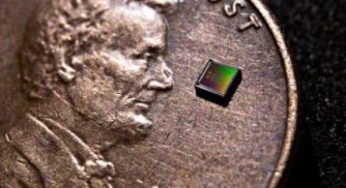Temperature sensor runs on 113pW
Article By : University of California San Diego

A technological breakthrough may pave the way for a new class of devices that can be powered by energy harvested from low-power sources.
A temperature sensor developed by electrical engineers at the University of California San Diego runs on only 113pW of power—or about 10 billion times smaller than a watt—and could extend the battery life of wearable or implantable devices that monitor body temperature, smart home monitoring systems, IoT devices and environmental monitoring systems.
In addition, the technology could also pave way for a new class of devices that can be powered by energy harvested from low-power sources, such as the body or the surrounding environment, researchers said.
“Our vision is to make wearable devices that are so unobtrusive, so invisible that users are virtually unaware that they’re wearing their wearables, making them ‘unawearables.’ Our new near-zero-power technology could one day eliminate the need to ever change or recharge a battery,” said Patrick Mercier, an electrical engineering professor at UC San Diego Jacobs School of Engineering and the study’s senior author.

Figure 1: An array of the temperature sensor chips. (Source: David Baillot/UC San Diego Jacobs School of Engineering)
The group's approach involves minimising power in two domains: the current source and the conversion of temperature to a digital readout.
Researchers built an ultra-low power current source using what are called “gate leakage” transistors—transistors in which tiny levels of current leak through the electronic barrier, or the gate. Transistors typically have a gate that can turn on and off the flow of electrons. But as the size of modern transistors continues to shrink, the gate material becomes so thin that it can no longer block electrons from leaking through—a phenomenon known as the quantum tunnelling effect.
Gate leakage is considered problematic in systems such as microprocessors or precision analogue circuits. For the research, the team is taking advantage of it—they’re using these minuscule levels of electron flow to power the circuit.
Using these current sources, researchers developed a less power-hungry way to digitise temperature. This process normally requires passing current through a resistor—its resistance changes with temperature—then measuring the resulting voltage, and then converting that voltage to its corresponding temperature using a high power analog to digital converter.
Instead of the conventional process, researchers developed a system to digitise temperature directly and save power. Their system consists of two ultra-low power current sources: one that charges a capacitor in a fixed amount of time regardless of temperature and one that charges at a rate that varies with temperature—slower at lower temperatures, faster at higher temperatures.
As the temperature changes, the system adapts so that the temperature-dependent current source charges in the same amount of time as the fixed current source. A built-in digital feedback loop equalises the charging times by reconnecting the temperature-dependent current source to a capacitor of a different size—the size of this capacitor is directly proportional to the actual temperature.
The temperature sensor is integrated into a small chip measuring 0.15mm × 0.15mm in area. It operates at temperatures ranging from minus 20°C to 40°C. Its performance is fairly comparable to that of the state of the art even at near-zero-power, researchers said.
One trade-off is that the sensor has a response time of approximately one temperature update per second, which is slightly slower than existing temperature sensors. However, this response time is sufficient for devices that operate in the human body, homes and other environments where temperatures do not fluctuate rapidly, researchers said.
A provisional patent is pending for this technology, according to the researchers.
Subscribe to Newsletter
Test Qr code text s ss


